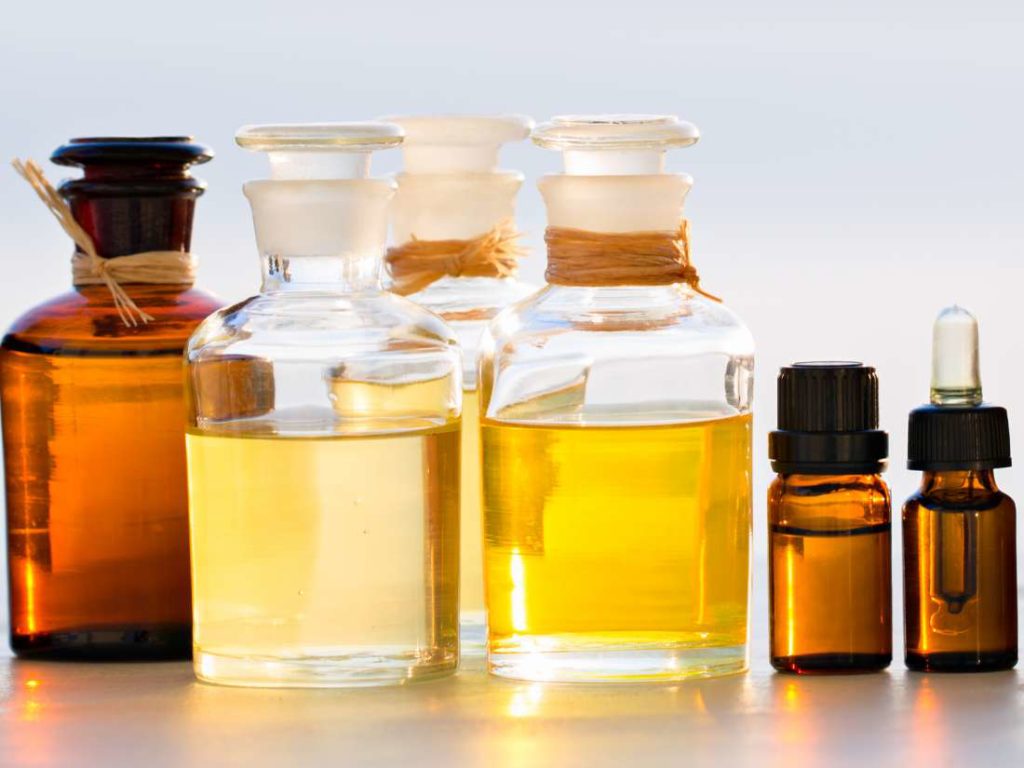Antiviral Essential Oils Antibacterial Antivirus
by TVance | March 17, 2019 6:50 am
The body of evidence regarding the effectiveness of natural botanicals against a great variety of viruses is growing. Over twenty years ago, German scientists found extracts of more than 100 species of the Lamiaceae family to have antiviral effects. This discovery lead to and increase in the examination of essential oils in Europe for the treatment of viral infections.
 [1]
[1]
Essential oils from many plant families have now been demonstrated to have antiviral properties. Interestingly, different plant families exhibit varying degrees of effectiveness depending on the virus strain. This is due to the particular molecular structures found in each type of oil, which penetrate physical entities to varying degrees (different tissues, cell walls, mucous membranes, etc). The effect on each virus strain depends also on the virus structure (enveloped, non-enveloped, molecular symmetry, etc.)
Certainly, one of the reasons for oils’ effectiveness en vivo is their lipophillic character – essential oils are easily absorbed into mammalian tissues, where they may produce the greatest results. In fact, when studying the anti-viral effects of essential oils, researchers found that normal cells seemed to acquire a special resistance to viral penetration, though the mechanism for this effect is not yet known.
Melissa and the Herpes Virus
One of the Lamiaceae plants studied, Melissa (Melissa officinalis – also known as Lemon Balm), was shown particularly efficacious against the herpes virus (HSV). Doctor Dietrich Wabner, a professor at the Technical University of Munich, has even reported that a one-time application of Melissa oil led to a complete remission of HSV lesions. A cream medication for Herpes outbreaks, who’s active ingredient is an extract of Melissa, is now sold in Germany under the name Lomaherpan. Use of Melissa essential oil itself may be just as effective – the oil can be applied directly to the lesions (or diluted to 10% in carrier if sensitivity is noted) to speed healing. Further occurrences can be prevented by applying oil to the area when sensations signal an eminent outbreak – repeating this protocol 3 or 4 times has been reported to cause total remission in some individuals.
Other essential oils found effective against the Herpes virus include bergamot, eucalyptus, lemongrass and tea tree. Related to HSV is Herpes Zoster or ‘Shingles’, another common virus-mediated skin condition. Application of a 50/50 blend of Ravensara essential oil and Tamanu nut oil has been found extremely effective for reducing symptoms by many people.
Antiviral Components of Oils
The list of essential oils exhibiting antiviral effects is extensive: Melissa (as above), tea tree, juniper, eucalyptus, thyme, palmarosa, lavender, rosemary, clove, laurel, cinnamon bark, anise, rose, lemongrass, geranium, neroli, bergamot, clary sage, and dill. The antiviral effect of an essential oil is due to particular components of the oil – some oils will work just as effectively on a particular infection as another, because they contain similar amounts of a certain component. The components of essential oils showing antiviral activity, and the oils in which they can be found, are as follows (from K. Schnaubelt, Ph.D. – Advanced Aromatherapy, p. 36):
Anethol – found in Anise
Alpha-Sabines – found in Tea Tree, Laurel, and other oils
Beta-Caryophyllene – found in Lavender, Rosemary, Thyme Linalool, and other oils
Carvone – found in Dill
Cinnamic aldehyde – found in Cinnamon Bark
Citral – found in Melissa, Lemongrass and other oils
Citronellol – found in Rose and Geranium
Eugenol – found in Clove
Gamma-Terpinene – Found in Juniper, Eucalyptus, Niaouli, Tea Tree and other oils
Linalol – found in Lavender and Neroli
Linalyl acetate – found in Clary Sage, Lavender, Bergamot and other oils
Limited In-Vivo Data
Good studies of application of these essential oils in cases of illness are difficult to come by, as infecting people with viruses in the laboratory to subsequently be treated with aromatics would be a difficult process at best. The oils and components above have mostly shown effectivenessin-vitro, though tests also indicate that the anti-viral effect should occur in-vivo as well. As with Melissa, it has been HSV that has been most thoroughly examined, because of the relative simplicity of doing so. But there is nothing particularly special about the herpes virus, and proper oil/pathogen paring should prove as effective.
There are some noted case studies by professional aromatherapists. Of importance in these studies is the oil/symptom relationship. Essential oils from plants of the Myrtaceae family – notably Eucalyptus Radiata and Tea Tree – and Ravensara (also high in Eucalyptol) seem to have helped in cases with respiratory symptoms. For the lower respiratory tract, Hyssop decumbens (from the same plant family as Melissa) has been of interest. Essential oils for such cases may be used either in a diffuser, being taken at regular intervals, or through massage, diluted in a carrier oil.
Conclusion
Because of the difficulty in many cases of illness in determining the exact virus type involved, more specific application cannot be given. Certainly, in cases of HSV, Melissa has been shown effective in a number of studies. For respiratory infections, Eucalyptus and Ravensara have been used with success, and can be safely used as an adjunct to regular medical care. These oils may support one’s recovery on a physiologic level – essential oils also play a part in uplifting emotions, which may also speed healing, or at least improve mental outlook during the healing process. For such instances, one may simply find the essential oil or combination that one finds pleasant, calming, and/or uplifting. PLEASE NOTE: In no cases, however, should self-treatment with essential oils be used in place of professional medical care where signs/symptoms of infectious illness are present.
- [Image]: https://alternativeresourcesdirectory.com/wp-content/uploads/2019/03/Antiviral-Essential-Oils-Antibacterial-Antivirus.jpg
Source URL: https://alternativeresourcesdirectory.com/news/antiviral-essential-oils-antibacterial-antivirus